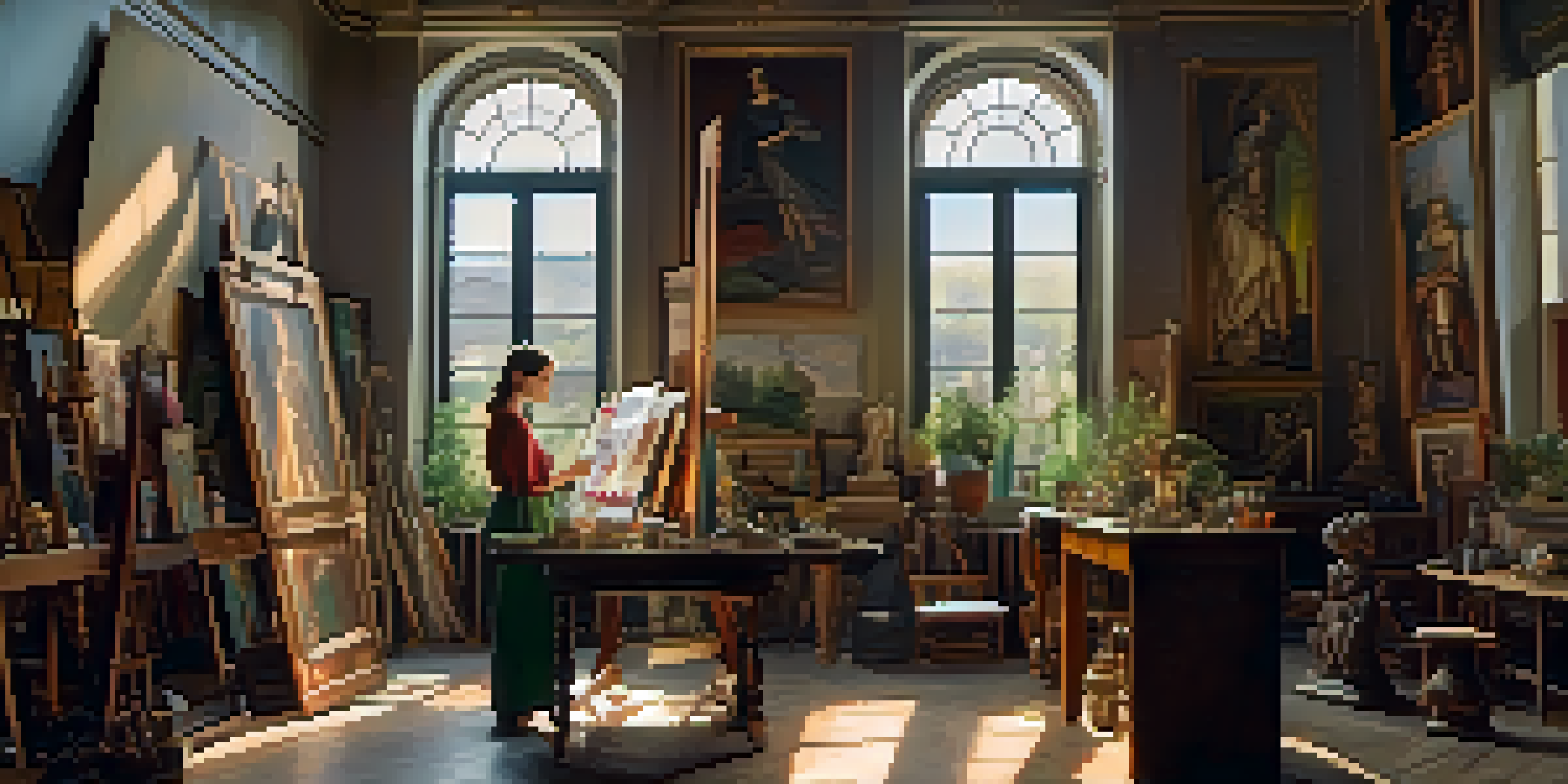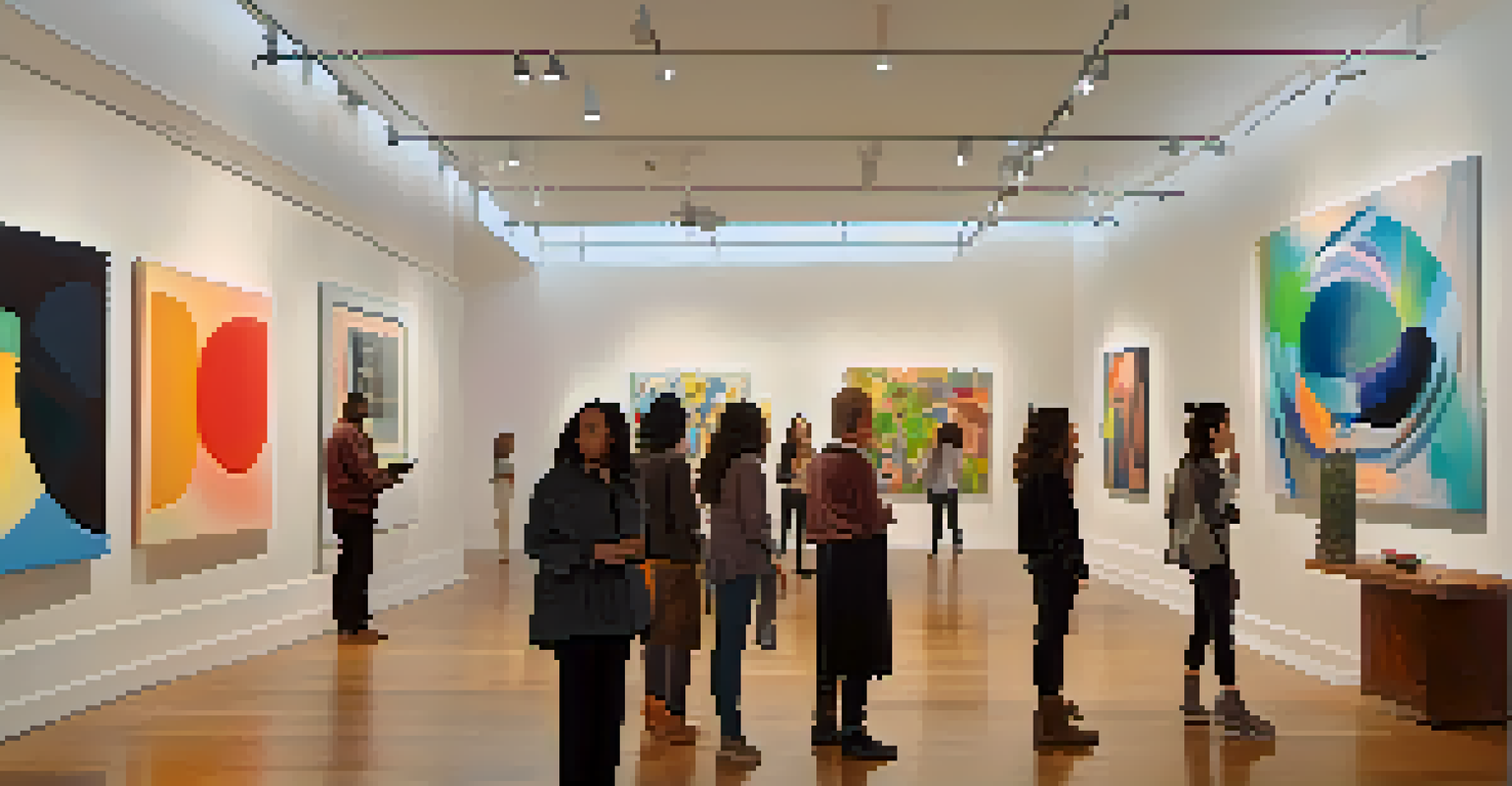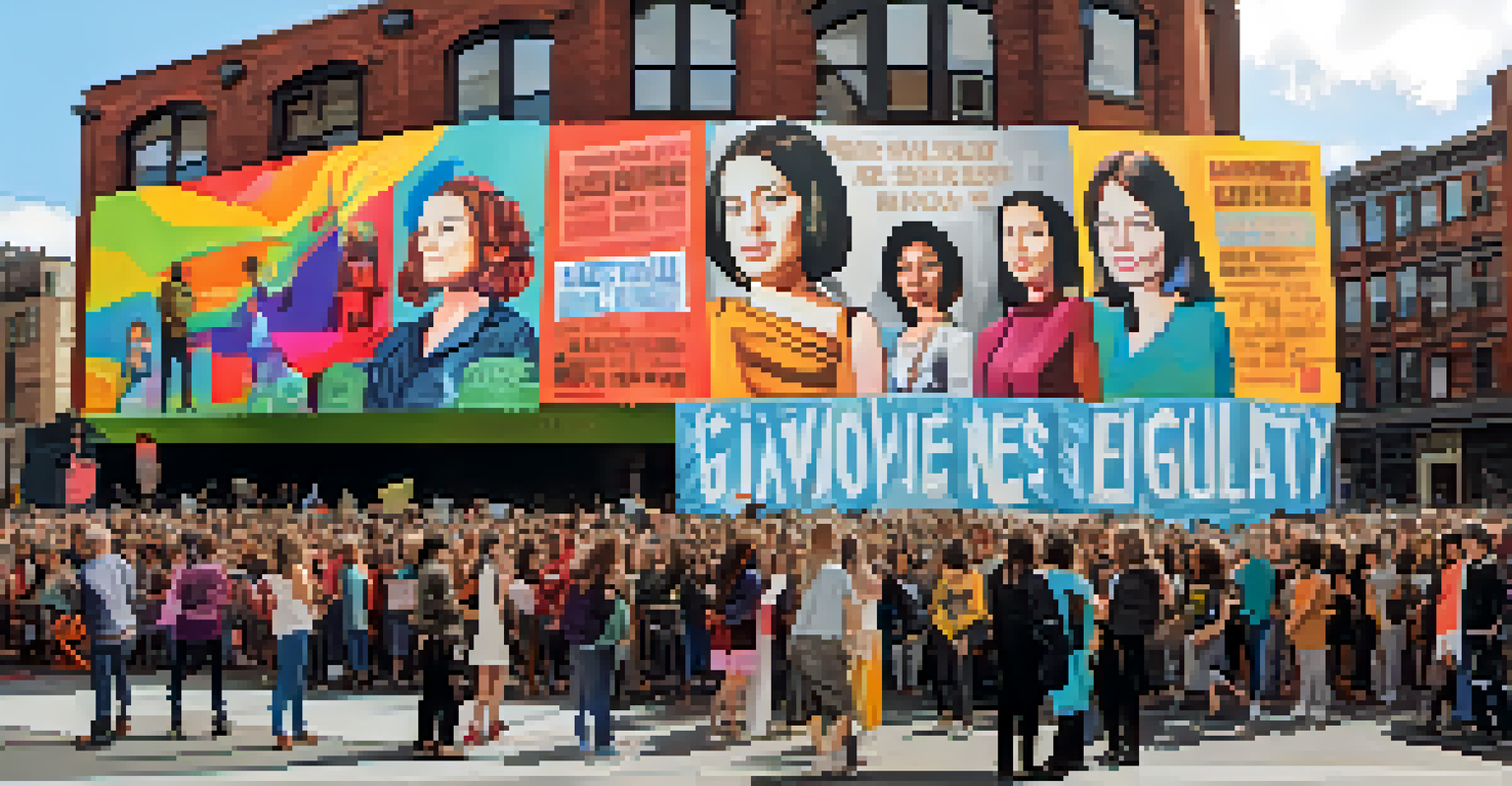Gender Dynamics in Artistic Movements: A Historical Overview

Introduction to Gender Dynamics in Art
Art has always been a reflection of society, and gender dynamics play a crucial role in shaping artistic movements. Historically, women artists have often been marginalized, yet their contributions are vital to understanding these movements. This overview will explore how gender dynamics have influenced art across different periods and styles, providing a comprehensive look at the evolution of these roles.
Art is not freedom from discipline, but disciplined freedom.
From the Renaissance to contemporary art, shifts in societal attitudes towards gender have impacted who gets to create and whose voices are amplified. For example, while the Renaissance celebrated male artists like Michelangelo and Raphael, female artists like Sofonisba Anguissola began to break through these barriers. Their stories highlight the ongoing struggle for recognition and equality in the art world.
As we delve into the various artistic movements, we'll uncover how female and male artists interacted, collaborated, and challenged each other, shaping the narrative of art history. This exploration will not only celebrate the achievements of women in art but also provoke thought on the ongoing challenges they face in a field that often still favors male perspectives.
Renaissance: The Rise of Individualism and Gender Roles
The Renaissance marked a significant shift in artistic expression, emphasizing individualism and humanism. While this movement primarily celebrated male artists, it also opened the door for women to enter the art scene, albeit in limited capacities. Women like Artemisia Gentileschi emerged during this time, using their art to express personal and feminist themes that challenged the norms of their day.

During the Renaissance, the art world was still largely dominated by men, who held the most prestigious positions and received the best commissions. However, the inclusion of women was often tied to their roles as muses or subjects rather than as creators. This highlights how gender dynamics influenced not only the creation of art but also the narratives surrounding it.
Gender Dynamics Shape Art History
Art history is profoundly influenced by gender dynamics, highlighting both the contributions and challenges faced by women artists across various movements.
The impact of the Renaissance on gender roles in art is profound, setting the stage for future movements. As women artists began to assert themselves, they laid the groundwork for later generations to challenge societal expectations, creating a ripple effect that would ultimately lead to the greater recognition of female artists in the centuries to come.
Baroque to Romanticism: Women Break Through Barriers
The Baroque and Romantic periods saw a gradual shift as women artists began to gain more visibility and recognition. Artists like Élisabeth Louise Vigée Le Brun and Mary Cassatt emerged during this time, not only creating remarkable works but also challenging the conventions of their male counterparts. Their success stories are inspiring examples of perseverance against the odds.
The role of the artist is to make the revolution irresistible.
Despite increased visibility, female artists still faced significant obstacles, including societal expectations and limited access to formal training. Many women found themselves navigating a complex landscape where their gender often dictated the subject matter they could explore. However, those who persevered were able to produce impactful works that spoke to both personal and universal themes.
As we examine this period, it becomes clear that the Baroque and Romantic movements were pivotal in shaping the roles of women in art. By challenging gender norms and creating their own narratives, these artists not only contributed to the evolution of artistic styles but also laid the groundwork for future feminist movements in art.
Modernism: A Revolution in Artistic Expression
The Modernist movement brought about radical changes in artistic expression, challenging traditional forms and embracing innovation. This period saw a surge of female artists who began to assert their voices more boldly, participating in avant-garde movements. Artists like Georgia O'Keeffe and Frida Kahlo used their art to explore identity, gender, and culture in ways that resonated with the broader feminist movements of their time.
Modernism's emphasis on breaking away from the past allowed women to experiment with their styles and subjects freely. The era's more inclusive approach opened doors for diverse perspectives, yet it also highlighted the persistent gender bias in the art world. Despite their significant contributions, many female Modernists struggled for acknowledgment, often overshadowed by their male peers.
Feminism Redefines Artistic Expression
The feminist movement of the 1960s and 70s redefined artistic expression by emphasizing women's narratives and challenging existing power structures in the art world.
Through the lens of Modernism, we witness a pivotal moment in the history of gender dynamics in art. This movement not only encouraged women to create but also challenged societal norms, paving the way for a more inclusive understanding of artistry that continues to evolve today.
Feminism and Art: A Response to Gender Inequality
The feminist movement of the 1960s and 70s had a profound impact on the art world, challenging existing power structures and calling for greater representation of women artists. This era saw the emergence of feminist art collectives that sought to address gender inequality head-on, creating spaces for women's voices to be heard. Artists like Judy Chicago and Cindy Sherman used their work to critique societal norms and highlight the experiences of women.
Feminist art not only sought to elevate women's voices but also aimed to redefine what art could be. By emphasizing personal narratives and collective experiences, feminist artists broke away from traditional representations of women in art. Their work often confronts viewers with challenging themes, encouraging discussions about gender, identity, and power dynamics.
As we reflect on the feminist art movement, it's clear that it served as a catalyst for change within the art community. By pushing against the boundaries of artistic expression and questioning the status quo, these artists not only reshaped art history but also inspired future generations to continue the fight for equality in all creative fields.
Contemporary Art: Diverse Voices and Gender Fluidity
In the contemporary art scene, we see a rich tapestry of voices that reflect an increasingly diverse understanding of gender. Artists today are not only addressing issues of gender inequality but are also exploring themes of gender fluidity and identity. This shift has led to a broader dialogue about what it means to be an artist in a world that embraces a spectrum of identities.
Contemporary artists like Zanele Muholi and K8 Hardy challenge traditional concepts of gender and sexuality through their work, pushing boundaries and inviting viewers to engage with complex narratives. Their contributions highlight the importance of intersectionality in art, emphasizing how race, class, and gender intersect to shape individual experiences.
Contemporary Art Embraces Diversity
Today's contemporary art scene reflects a diverse understanding of gender, with artists exploring themes of fluidity and identity, fostering broader discussions within the artistic community.
The evolution of gender dynamics in contemporary art represents a significant departure from previous movements. As artists continue to explore and redefine gender, the art world becomes a space for dialogue and reflection, allowing for a more inclusive and representative understanding of creativity in our society.
Conclusion: The Ongoing Journey for Equality in Art
As we conclude our exploration of gender dynamics in artistic movements, it's evident that the journey towards equality is ongoing. While significant progress has been made, challenges remain for women and marginalized artists striving for recognition in a still male-dominated field. The history of art is a testament to the resilience and creativity of those who refuse to be silenced.
The stories of women artists throughout history remind us of the importance of representation and the need for continued advocacy in the art world. By celebrating diverse voices and perspectives, we can create a richer, more inclusive narrative that honors the contributions of all artists, regardless of gender.

Ultimately, understanding gender dynamics in art is essential not only for appreciating the past but also for shaping the future. As we move forward, let's commit to supporting and uplifting artists of all genders, ensuring that their stories and talents are recognized and celebrated within the artistic community.